Parametric Analysis of Electrical Conductivity of Polymer-Composites
Abstract
1. Introduction
2. The Existing Models and Their Formulation
2.1. Weber Models
2.2. Power Law Equation
2.3. Eight-Chain Model
2.4. McLachlan (GEM) Model
2.5. Modified McLachlan (GEM) Model
- i
- The modeling of the electrical conductivity of polymer-composite becomes difficult when the conductivity of both materials are widely apart.
- ii
- The model did not consider the in-plane and through-plane conductivity, therefore modeling of a network with composites such as carbon black and natural graphite, probably, will never be accurate.
2.6. Mamunya Model
2.7. Clingerman Additive Model
2.8. Monte Carlo Method
2.9. Maxwell Equation
2.10. Maxwell–Wagnar Equation
2.11. Pal Model
2.12. Sigmoidal Function
3. Factors Affecting the Electrical Conductivity of Polymer Composites
4. Conclusions
Acknowledgments
Conflicts of Interest
Abbreviations
| PC | Polymer composite |
| CPC | Conductive polymer composite |
| AIN | Aluminum nitride |
| N | Network |
| PAN | Polyacrylonitride |
| FeO | Ferrate |
| EMI | Electromagnetic inference |
| EEM | End-to-end model |
| FCM | Fiber contact model |
| MWCNT | Multiwalled carbon nanotube |
| PDMS | Polydimethylsiloxane |
| GEM | General effective model |
| Structural function | |
| AEMPC | Additive electrical model of polymer composites |
| PVC-Ni | Polyvinyl chloride loaded nickel |
| MCF/PP | Milled carbon fiber loade polypropylene |
| CF/PP | Carbon fiber loaded polypropylene |
| MWCNT/PDMS | Multiwalled carbon nanotube loaded Polydimethylsiloxane |
| CF/PP | Carbon fiber loaded polypropylene |
| CB/PVC | Carbon black loaded polyvinyl chloride |
| PPy/PMMA | Polypyrrole loaded Polymethymethacrylate |
| ABS | Acrylonitrile butadiene styrene |
| Cu/ER-PVC | Copper loaded epoxy resin and polyvinyl chloride |
| Ni/ER-PVC | Nickel loaded epoxy resin and polyvinly chloride |
References
- Dundar, S.; Gokkurt, B.; Soylu, Y. Mathematical modelling at a glance: A theoretical study. Procedia-Soc. Behav. Sci. 2012, 46, 3465–3470. [Google Scholar] [CrossRef]
- Radzuan, N.A.M.; Sulong, A.B.; Sahari, J. A review of electrical conductivity models for conductive polymer composite. Int. J. Hydrog. Energy 2017, 42, 9262–9273. [Google Scholar] [CrossRef]
- Gonçalves, J.; Lima, P.; Krause, B.; Pötschke, P.; Lafont, U.; Gomes, J.; Abreu, C.; Paiva, M.; Covas, J. Electrically conductive polyetheretherketone nanocomposite filaments: From production to fused deposition modeling. Polymers 2018, 10, 925. [Google Scholar] [CrossRef] [PubMed]
- Taherian, R.; Kausar, A. Electrical Conductivity in Polymer-Based Composites: Experiments, Modelling, and Applications; William Andrew: Norwich, NY, USA, 2018. [Google Scholar]
- Lee, G.W.; Park, M.; Kim, J.; Lee, J.I.; Yoon, H.G. Enhanced thermal conductivity of polymer composites filled with hybrid filler. Compos. Part A Appl. Sci. Manuf. 2006, 37, 727–734. [Google Scholar] [CrossRef]
- Shi, K.; Ren, M.; Zhitomirsky, I. Activated carbon-coated carbon nanotubes for energy storage in supercapacitors and capacitive water purification. ACS Sustain. Chem. Eng. 2014, 2, 1289–1298. [Google Scholar] [CrossRef]
- Shi, K.; Zhitomirsky, I. Polypyrrole nanofiber–carbon nanotube electrodes for supercapacitors with high mass loading obtained using an organic dye as a co-dispersant. J. Mater. Chem. A 2013, 1, 11614–11622. [Google Scholar] [CrossRef]
- Pandey, N.; Shukla, S.K.; singh, N.B. Water purification by polymer nanocomposites: An overview. Nanocomposites 2017, 3, 47–66. [Google Scholar] [CrossRef]
- Shi, K.; Zhitomirsky, I. Electrophoretic nanotechnology of graphene–carbon nanotube and graphene–polypyrrole nanofiber composites for electrochemical supercapacitors. J. Colloid Interface Sci. 2013, 407, 474–481. [Google Scholar] [CrossRef] [PubMed]
- Huang, Y.; Li, J.; Chen, X.; Wang, X. Applications of conjugated polymer based composites in wastewater purification. RSC Adv. 2014, 4, 62160–62178. [Google Scholar] [CrossRef]
- Radzuan, N.A.M.; Sulong, A.B.; Rao Somalu, M. Electrical properties of extruded milled carbon fibre and polypropylene. J. Compos. Mater. 2017, 51, 3187–3195. [Google Scholar] [CrossRef]
- Lee, J.H.; Lee, J.S.; Kuila, T.; Kim, N.H.; Jung, D. Effects of hybrid carbon fillers of polymer composite bipolar plates on the performance of direct methanol fuel cells. Compos. Part B Eng. 2013, 51, 98–105. [Google Scholar] [CrossRef]
- Taipalus, R.; Harmia, T.; Zhang, M.Q.; Friedrich, K. The electrical conductivity of carbon-fibre-reinforced polypropylene/polyaniline complex-blends: Experimental characterisation and modelling. Compos. Sci. Technol. 2001, 61, 801–814. [Google Scholar] [CrossRef]
- Mamunya, Y.P.; Davydenko, V.V.; Pissis, P.; Lebedev, E.V. Electrical and thermal conductivity of polymers filled with metal powders. Eur. Polym. J. 2002, 38, 1887–1897. [Google Scholar] [CrossRef]
- Lux, F. Models proposed to explain the electrical conductivity of mixtures made of conductive and insulating materials. J. Mater. Sci. 1993, 28, 285–301. [Google Scholar] [CrossRef]
- Vargas-Bernal, R.; Herrera-Pérez, G.; Calixto-Olalde, M.; Tecpoyotl-Torres, M. Analysis of DC electrical conductivity models of carbon nanotube-polymer composites with potential application to nanometric electronic devices. J. Electr. Comput. Eng. 2013, 2013. [Google Scholar] [CrossRef]
- Weber, M.; Kamal, M.R. Estimation of the volume resistivity of electrically conductive composites. Polym. Compos. 1997, 18, 711–725. [Google Scholar] [CrossRef]
- Jang, S.H.; Yin, H. Characterization and modeling of the effective electrical conductivity of a carbon nanotube/polymer composite containing chain-structured ferromagnetic particles. J. Compos. Mater. 2017, 51, 171–178. [Google Scholar] [CrossRef]
- Clingerman, M.L.; King, J.A.; Schulz, K.H.; Meyers, J.D. Evaluation of electrical conductivity models for conductive polymer composites. J. Appl. Polym. Sci. 2002, 83, 1341–1356. [Google Scholar] [CrossRef]
- Taherian, R. Developments and Modeling of Electrical Conductivity in Composites: Experiments, Modeling and Application. In Electrical Conductivity in Polymer-Based Composites: Experiments, Modelling and Applications; ResearchGate: Berlin, Germany, 2019; pp. 297–363. [Google Scholar]
- Zhang, Q.; Zhang, B.Y.; Guo, Z.X.; Yu, J. Tunable electrical conductivity of carbon-black-filled ternary polymer blends by constructing a hierarchical structure. Polymers 2017, 9, 404. [Google Scholar] [CrossRef] [PubMed]
- Khan, W.S.; Asmatulu, R.; Eltabey, M.M. Electrical and thermal characterization of electrospun PVP nanocomposite fibers. J. Nanomater. 2013, 2013. [Google Scholar] [CrossRef]
- Le, T.H.; Kim, Y.; Yoon, H. Electrical and electrochemical properties of conducting polymers. Polymers 2017, 9, 150. [Google Scholar] [CrossRef] [PubMed]
- Aji, M.P.; Bijaksana, S.; Abdullah, M. Electrical and Magnetic Properties of Polymer Electrolyte (PVA: LiOH) Containing In Situ Dispersed Fe3O4 Nanoparticles. ISRN Mater. Sci. 2012, 2012. [Google Scholar] [CrossRef][Green Version]
- Sedova, A.; Khodorov, S.; Ehre, D.; Achrai, B.; Wagner, H.D.; Tenne, R.; Dodiuk, H.; Kenig, S. Dielectric and Electrical Properties of WS2 Nanotubes/Epoxy Composites and Their Use for Stress Monitoring of Structures. J. Nanomater. 2017, 2017. [Google Scholar] [CrossRef]
- Pang, H.; Xu, L.; Yan, D.X.; Li, Z.M. Conductive polymer composites with segregated structures. Prog. Polym. Sci. 2014, 39, 1908–1933. [Google Scholar] [CrossRef]
- Kirkpatrick, S. Percolation and conduction. Rev. Mod. Phys. 1973, 45, 574. [Google Scholar] [CrossRef]
- McLachlan, D.S.; Blaszkiewicz, M.; Newnham, R.E. Electrical resistivity of composites. J. Am. Ceram. Soc. 1990, 73, 2187–2203. [Google Scholar] [CrossRef]
- Kakati, B.K.; Sathiyamoorthy, D.; Verma, A. Semi-empirical modeling of electrical conductivity for composite bipolar plate with multiple reinforcements. Int. J. Hydrog. Energy 2011, 36, 14851–14857. [Google Scholar] [CrossRef]
- Mamunya, E.P.; Davidenko, V.V.; Lebedev, E.V. Effect of polymer-filler interface interactions on percolation conductivity of thermoplastics filled with carbon black. Compos. Interfaces 1996, 4, 169–176. [Google Scholar] [CrossRef]
- Clingerman, M.L.; Weber, E.H.; King, J.A.; Schulz, K.H. Development of an additive equation for predicting the electrical conductivity of carbon-filled composites. J. Appl. Polym. Sci. 2003, 88, 2280–2299. [Google Scholar] [CrossRef]
- Keith, J.M.; King, J.A.; Barton, R.L. Electrical conductivity modeling of carbon-filled liquid-crystalline polymer composites. J. Appl. Polym. Sci. 2006, 102, 3293–3300. [Google Scholar] [CrossRef]
- McCullough, R.L. Generalized combining rules for predicting transport properties of composite materials. Compos. Sci. Technol. 1985, 22, 3–21. [Google Scholar] [CrossRef]
- Zhao, N.; Kim, Y.; Koo, J.H. 3D Monte Carlo Simulation modeling for the electrical conductivity of carbon nanotube-incorporate polymer nanocomposite using resistance network formation. Mater. Sci. 2019. [Google Scholar] [CrossRef]
- Wang, W.; Jayatissa, A.H. Computational and experimental study of electrical conductivity of graphene/poly (methyl methacrylate) nanocomposite using Monte Carlo method and percolation theory. Synth. Met. 2015, 204, 141–147. [Google Scholar] [CrossRef]
- Zhang, T.; Yi, Y.B. Monte Carlo simulations of effective electrical conductivity in short-fiber composites. J. Appl. Phys. 2008, 103, 014910. [Google Scholar] [CrossRef]
- Ma, H.M.; Gao, X.L.; Tolle, T.B. Monte Carlo modeling of the fiber curliness effect on percolation of conductive composites. Appl. Phys. Lett. 2010, 96, 061910. [Google Scholar] [CrossRef]
- Gong, S.; Zhu, Z.H.; Haddad, E.I. Modeling electrical conductivity of nanocomposites by considering carbon nanotube deformation at nanotube junctions. J. Appl. Phys. 2013, 114, 074303. [Google Scholar] [CrossRef]
- Vas, J.V.; Thomas, M.J. Monte Carlo modelling of percolation and conductivity in carbon filled polymer nanocomposites. IET Sci. Meas. Technol. 2017, 12, 98–105. [Google Scholar] [CrossRef]
- Mezdour, D.; Sahli, S.; Tabellout, M. Study of the Electrical Conductivity in Fiber Composites. Int. J. Multiphys. 2010, 4. [Google Scholar] [CrossRef]
- Gbaguidi, A.; Namilae, S.; Kim, D. Monte Carlo model for piezoresistivity of hybrid nanocomposites. J. Eng. Mater. Technol. 2018, 140, 011007. [Google Scholar] [CrossRef]
- Pal, R. New models for thermal conductivity of particulate composites. J. Reinf. Plast. Compos. 2007, 26, 643–651. [Google Scholar] [CrossRef]
- Maxwell, J.C. A Treatise on Electricity and Magnetism; Clarendon Press: Oxford, UK, 1873; Volume 1. [Google Scholar]
- Tjørve, E. Shapes and functions of species–area curves: A review of possible models. J. Biogeogr. 2003, 30, 827–835. [Google Scholar] [CrossRef]
- Rahaman, M.; Aldalbahi, A.; Govindasami, P.; Khanam, N.; Bhandari, S.; Feng, P.; Altalhi, T. A new insight in determining the percolation threshold of electrical conductivity for extrinsically conducting polymer composites through different sigmoidal models. Polymers 2017, 9, 527. [Google Scholar] [CrossRef]
- Aneli, J.; Zaikov, G.; Mukbaniani, O. Physical principles of the conductivity of electrical conducting polymer composites. Chem. Chem. Technol. 2011, 5, 75–87. [Google Scholar] [CrossRef]
- Nagata, K.; Iwabuki, H.; Nigo, H. Effect of particle size of graphites on electrical conductivity of graphite/polymer composite. Compos. Interfaces 1998, 6, 483–495. [Google Scholar] [CrossRef]
- Bouknaitir, I.; Aribou, N.; Elhad Kassim, S.A.; El Hasnaoui, M.; Melo, B.M.G.; Achour, M.E.; costa, L.C. Electrical properties of conducting polymer composites: Experimental and modeling approaches. Spectrosc. Lett. 2017, 50, 196–199. [Google Scholar] [CrossRef]
- McCluskey, P.; Morris, J.; Verneker, V.R.P.; Kondracki, P.; Finello, D. Models of electrical conduction in nanoparticle filled polymers. In Proceedings of the 3rd International Conference on Adhesive Joining and Coating Technology in Electronics Manufacturing 1998 (Cat. No. 98EX180), Binghamton, NY, USA, 30–30 September 1998; pp. 84–89. [Google Scholar]
- Stelmashchuk, A.; Karbovnyk, I.; Lazurak, R.; Kochan, R. Modeling the conductivity of nanotube networks. In Proceedings of the 2017 9th IEEE International Conference on Intelligent Data Acquisition and Advanced Computing Systems: Technology and Applications (IDAACS), Bucharest, Romania, 21–23 September 2017; Volume 1, pp. 410–414. [Google Scholar]
- Liu, F.; Sun, W.; Sun, Z.; Yeow, J.T.W. Effect of CNTs alignment on electrical conductivity of PDMS/MWCNTs composites. In Proceedings of the 14th IEEE International Conference on Nanotechnology, Toronto, ON, Canada, 18–21 August 2014; pp. 711–714. [Google Scholar]
- Mohan, L.; Sunitha, K.; sindhu, T.K. Modelling of electrical percolation and conductivity of carbon nanotube based polymer nanocomposites. In Proceedings of the 2018 IEEE International Symposium on Electromagnetic Compatibility and 2018 IEEE Asia-Pacific Symposium on Electromagnetic Compatibility (EMC/APEMC), Singapore, 14–18 May 2018; pp. 919–924. [Google Scholar]
- Rahman, R.; Servati, P. Efficient analytical model of conductivity of CNT/polymer composites for wireless gas sensors. IEEE Trans. Nanotechnol. 2014, 14, 118–129. [Google Scholar] [CrossRef]
- Chen, Y.; Wang, S.; Pan, F.; Zhang, J. A numerical study on electrical percolation of polymer-matrix composites with hybrid fillers of carbon nanotubes and carbon black. J. Nanomater. 2014, 2014. [Google Scholar] [CrossRef]
- Merzouki, A.; Haddaoui, N. Electrical conductivity modeling of polypropylene composites filled with carbon black and acetylene black. ISRN Polym. Sci. 2012, 2012. [Google Scholar] [CrossRef]
- Pisitsak, P.; Magaraphan, R.; Jana, S.C. Electrically conductive compounds of polycarbonate, liquid crystalline polymer, and multiwalled carbon nanotubes. J. Nanomater. 2012, 2012. [Google Scholar] [CrossRef]
- Singh, R.; Sandhu, G.; Penna, R.; Farina, I. Investigations for thermal and electrical conductivity of ABS-graphene blended prototypes. Materials 2017, 10, 881. [Google Scholar] [CrossRef]
- Mohd Radzuan, N.; Sulong, A.; Rao Somalu, M.; Majlan, E.; Husaini, T.; Rosli, M. Effects of die configuration on the electrical conductivity of polypropylene reinforced milled carbon fibers: An application on a bipolar plate. Polymers 2018, 10, 558. [Google Scholar] [CrossRef]
- Wieme, T.; Duan, L.; Mys, N.; Cardon, L.; Dooge, D. Effect of matrix and graphite filler on thermal conductivity of industrially feasible injection molded thermoplastic composites. Polymers 2019, 11, 87. [Google Scholar] [CrossRef]
- Kalaitzidou, K.; Fukushima, H.; Drzal, L. A route for polymer nanocomposites with engineered electrical conductivity and percolation threshold. Materials 2010, 3, 1089–1103. [Google Scholar] [CrossRef]
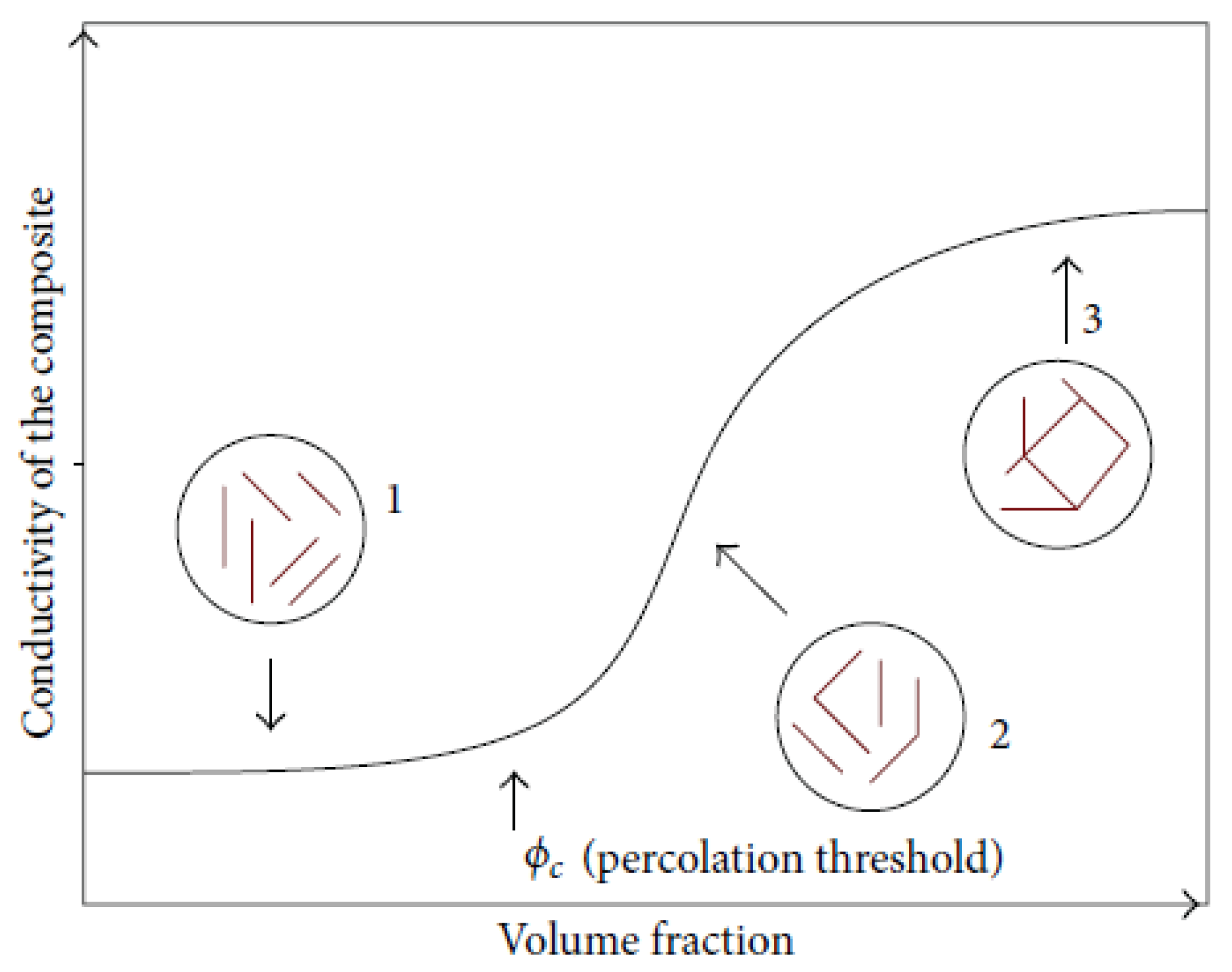
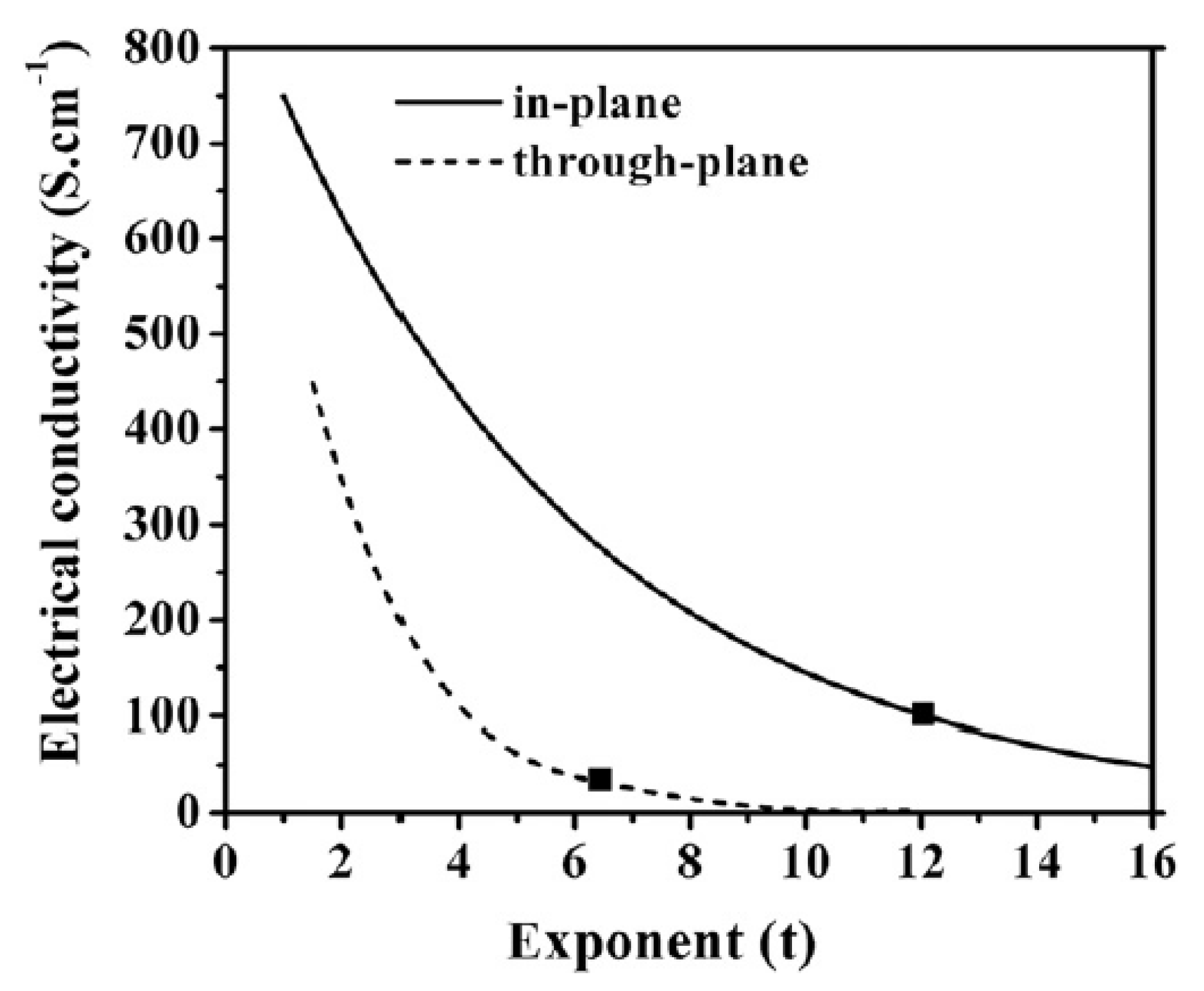

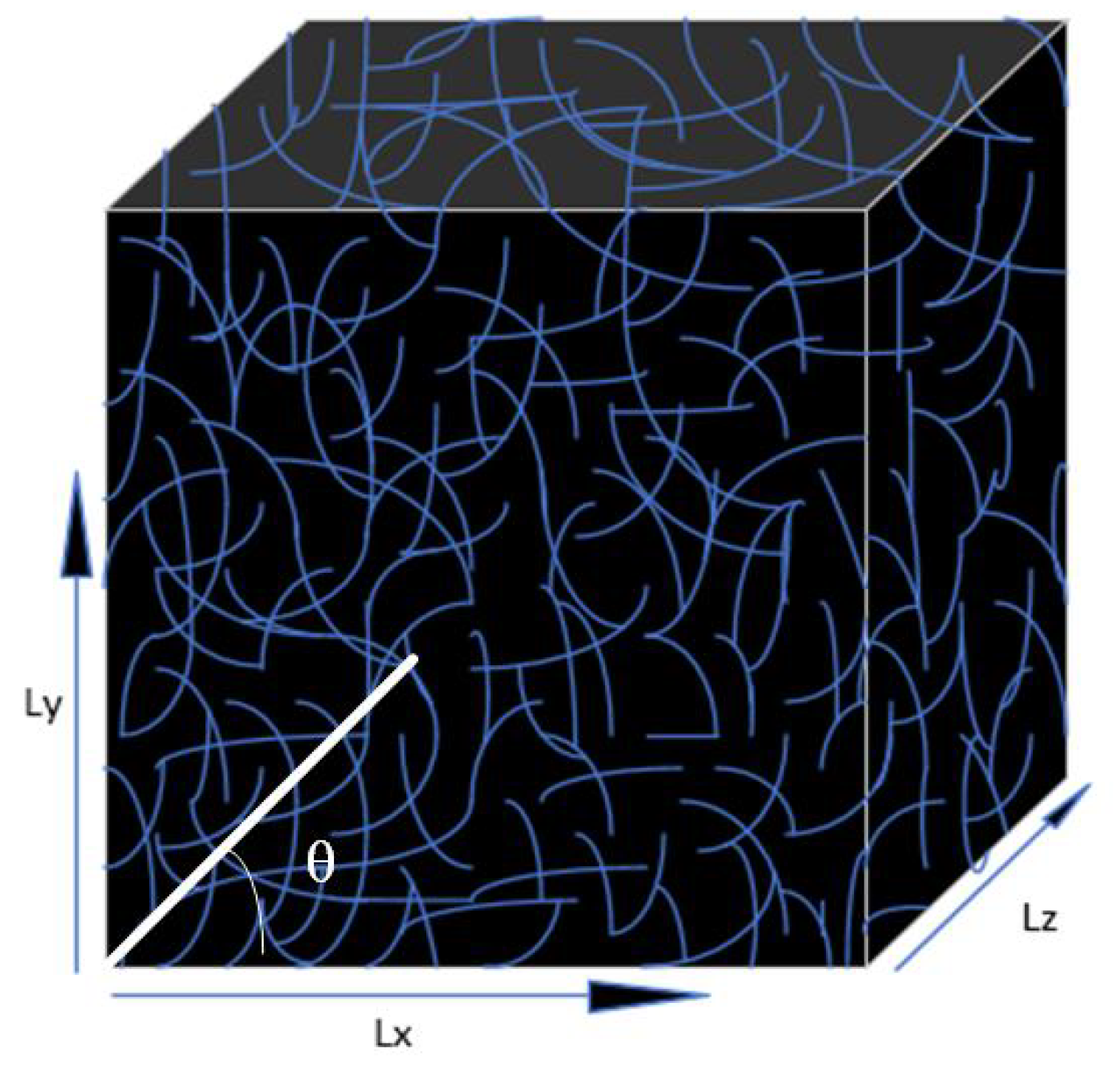
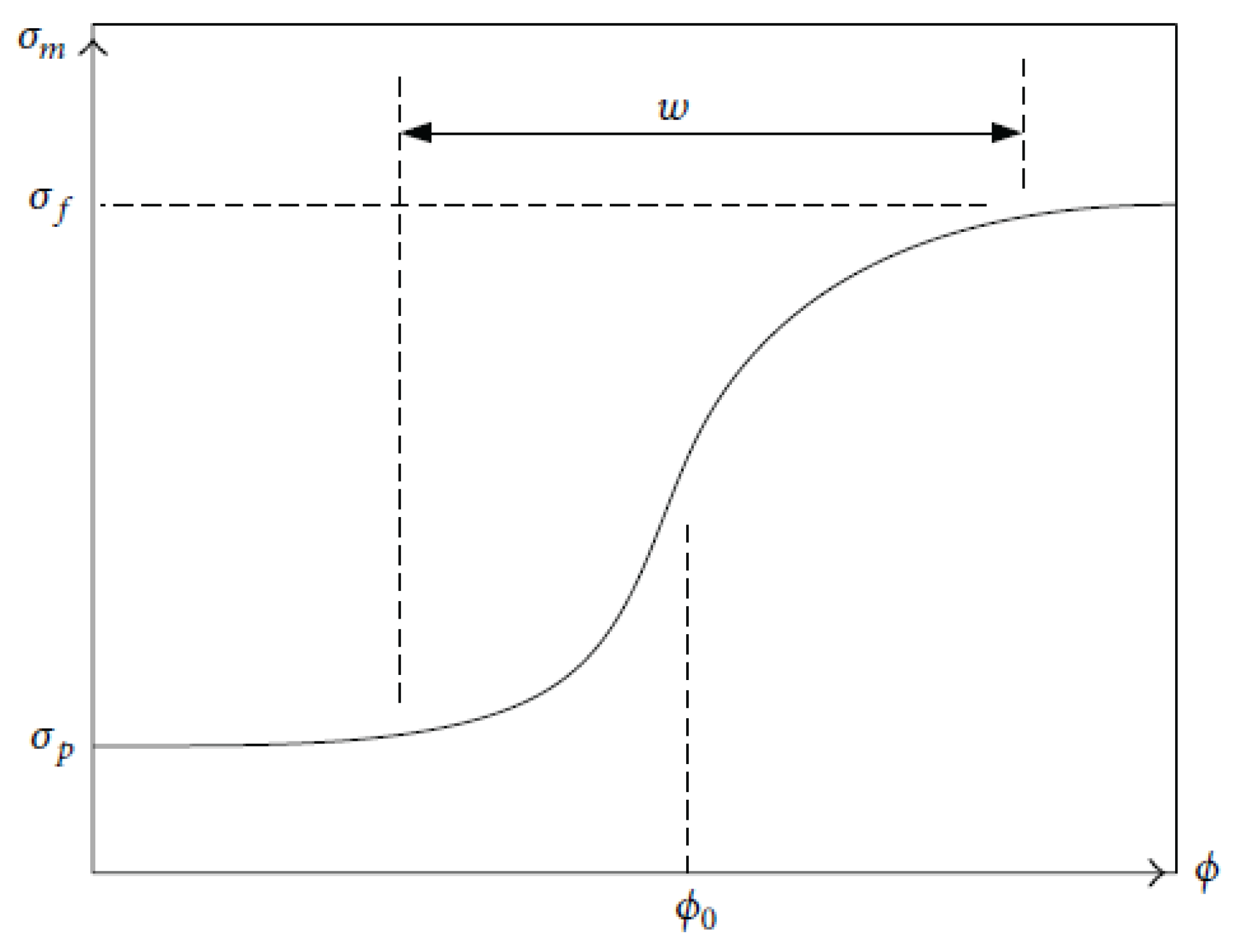
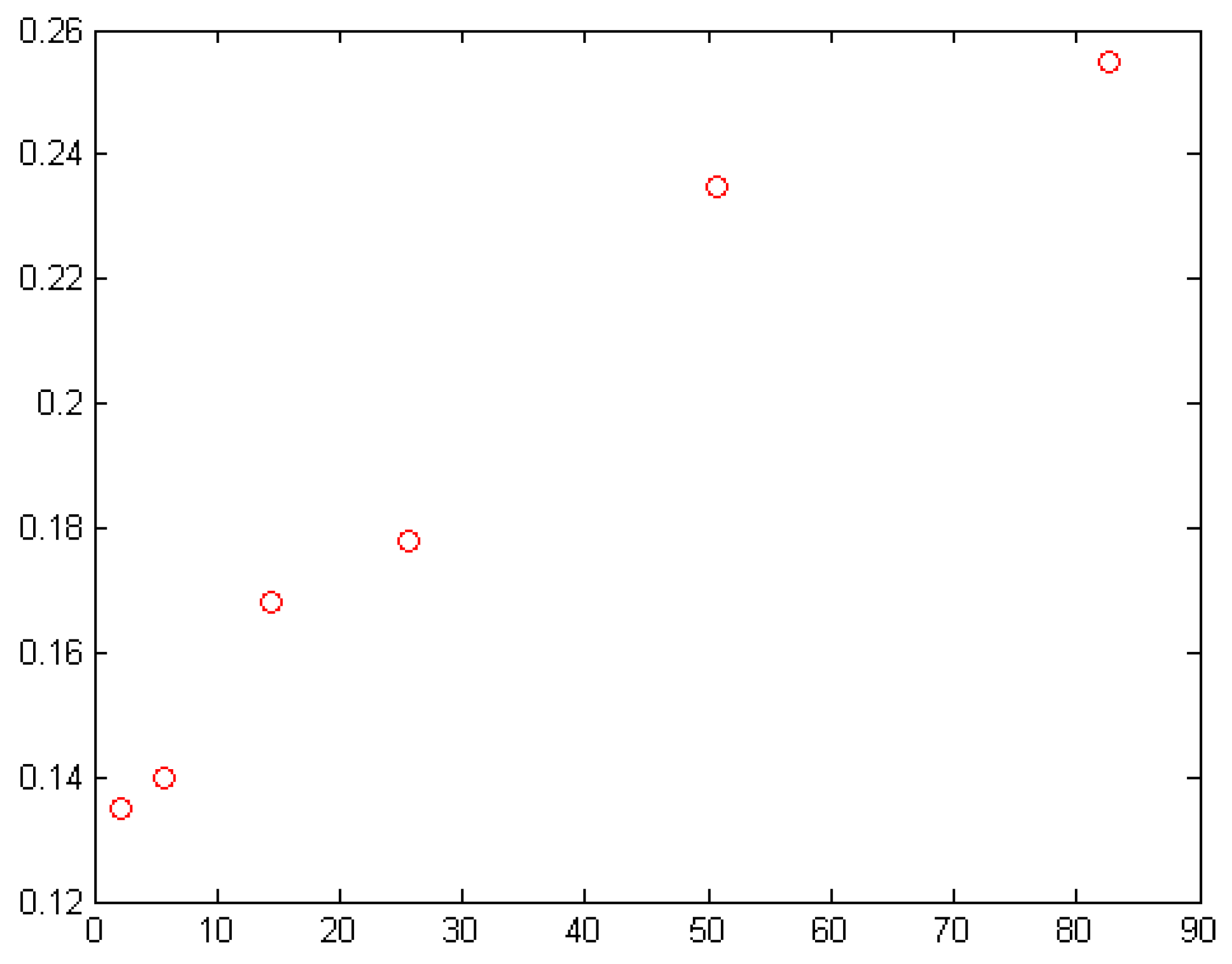
| Application | Energy State | Resistivity Value (-cm) |
|---|---|---|
| As conductors: | Highly Conductive | –10 |
| i. Transistors | ||
| ii. Bipolar plates | ||
| iii. Thermoelectric plates | ||
| iv. Busbars etc. | ||
| As Sensors and EMI | Conductive | 10– |
| i. Displacement sensors | ||
| ii. Current sensor | ||
| iii. Voltage sensors | ||
| iv. Temperature sensors | ||
| v. Organic liquid sensor | ||
| etc | ||
| Electroplating | Insulator/Conductive | – |
| i.Fuel tank | ||
| ii. Anti-static storage tank | ||
| iii. Mining pipes | ||
| iv. Storage containers | ||
| etc. | ||
| Perfect insulator | Insulator | – |
| i. Electric cable insulator | ||
| etc. |
| Comp-Site | log (S/m) | log (S/m) | log (S/m) | F | t | |
|---|---|---|---|---|---|---|
| ER-Cu | −12.8 | −12.5 | 5.2 | 0.05 | 0.30 | 2.9 |
| PVC-Cu | −13.5 | −13.2 | 5.8 | 0.05 | 0.30 | 3.2 |
| ER-Ni | −12.8 | −12.0 | 4.8 | 0.09 | 0.51 | 2.4 |
| PVC-Ni | −13.5 | −13.3 | 4.5 | 0.04 | 0.25 |
| S/N | Model | Parameters | Short-Coming | Filler/Matrix | Reference |
|---|---|---|---|---|---|
| Shapes, orientation, | [17] | ||||
| Weber | fiber concentration, | Degree of orientation | MCF/PP, Graphite/epoxy, | [13] | |
| 1 | (FCM, and MFCM) | average length | difficult to measure | CF/PP-P | [11] |
| It does not account for | |||||
| for i. particle shape, | [30] | ||||
| Carrier tunneling | ii. Interaction between | Silver-filled polymer, | [48] | ||
| 2 | Power Law | and critical exponent | polymer and filler | Nb-alumina | [49] |
| It has not being fully | |||||
| 3 | Eight Chain | Volume fraction | investigated by researchers. | MWCNT/PDMS | [18] |
| [2] | |||||
| Volume fraction, shape, | Unable to predict EC of CF/PP | [48] | |||
| size, aspect critical | due to orientation at the | CF/PP, CB/PVC, | [11] | ||
| 4 | McLachlan (GEM) | value, orientation angle | transverse direction. | PPy/PMMA | [28] |
| Critical exponential, | |||||
| orientation and | Insufficient defined | CB,CF | [29] | ||
| 5 | Modified McLachlan | shape of filler | parameters | Pheno formaldehyde/NG, | [48] |
| Packing factor, aspect ratio, | CF/nylon 6,6-polycarbonate, | [48] | |||
| surface energy of Filler and | Insufficient defined | CB/polymer, | [14] | ||
| 6 | Mamunya | polymer, particle shape | parameters | Cu/ER-PVC, Ni-ER-PVC, PPy/PMMA | [19] |
| [32] | |||||
| Surface energy | Not suitable for | [19,31] | |||
| 7 | Clingerman | and geometry of filler | multifiller system | CB/PMMA | [2] |
| Contact resistance, | |||||
| Alignment angle, | |||||
| geometrical parameters, | Not suitable for | MWCNT/polymer, MWCNT/PDMS, | [50,51] | ||
| 8 | Monte Carlo | dispersed conductivity | multifiller system | CNT/polymer, Ag/epoxy | [51] |
| Not suitable for | |||||
| 9 | Maxwell | Filler diameter | multifiller system | Various polymer-composites | [52] |
| Not suitable for | |||||
| 10 | Maxwell–Wagner | Particle size | multifiller system | Various polymer-composites | [42] |
| Volume fraction, conductivity | Not suitable for | ||||
| 11 | Pal | of filler and polymer | multifiller system | Various polymer-composites | [42] |
| filller, polymer | |||||
| conductivity, and filler | Fitting the model is | EVA/carbon fiber, | [16] | ||
| 12 | Sigmoidal | volume fraction | quite challenging | NBR/carbon black | [53] |
| Material | Aspect Ration | Resistivity cm |
|---|---|---|
| VGCF | 350–650 | 55 |
| xGnP-1 | 100 | 100 |
| PAN | 24 | 1400 |
© 2019 by the authors. Licensee MDPI, Basel, Switzerland. This article is an open access article distributed under the terms and conditions of the Creative Commons Attribution (CC BY) license (http://creativecommons.org/licenses/by/4.0/).
Share and Cite
Folorunso, O.; Hamam, Y.; Sadiku, R.; Ray, S.S.; Joseph, A.G. Parametric Analysis of Electrical Conductivity of Polymer-Composites. Polymers 2019, 11, 1250. https://doi.org/10.3390/polym11081250
Folorunso O, Hamam Y, Sadiku R, Ray SS, Joseph AG. Parametric Analysis of Electrical Conductivity of Polymer-Composites. Polymers. 2019; 11(8):1250. https://doi.org/10.3390/polym11081250
Chicago/Turabian StyleFolorunso, Oladipo, Yskandar Hamam, Rotimi Sadiku, Suprakas Sinha Ray, and Adekoya Gbolahan Joseph. 2019. "Parametric Analysis of Electrical Conductivity of Polymer-Composites" Polymers 11, no. 8: 1250. https://doi.org/10.3390/polym11081250
APA StyleFolorunso, O., Hamam, Y., Sadiku, R., Ray, S. S., & Joseph, A. G. (2019). Parametric Analysis of Electrical Conductivity of Polymer-Composites. Polymers, 11(8), 1250. https://doi.org/10.3390/polym11081250








